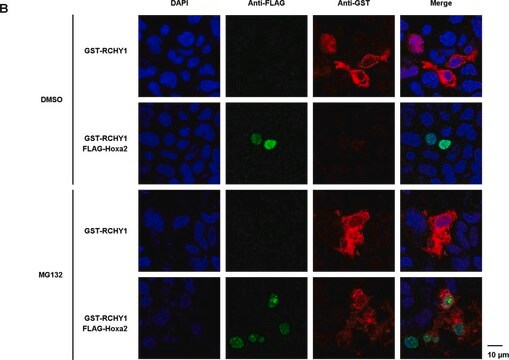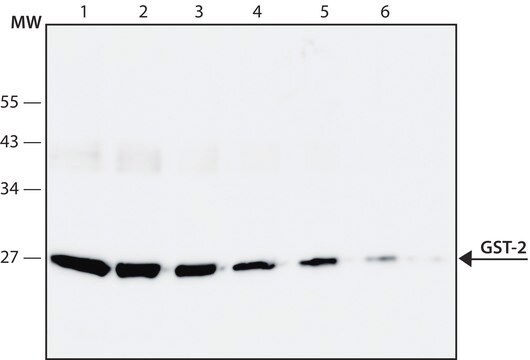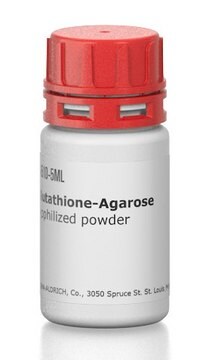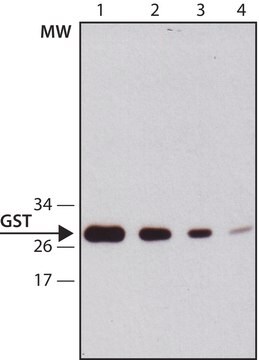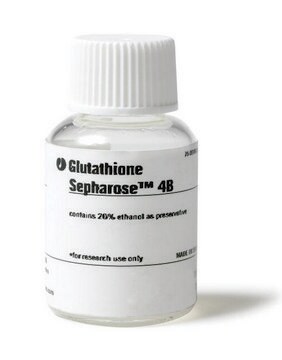A8580
Anti-Glutathione-S-Transferase (GST)–Agarose antibody produced in rabbit
IgG fraction of antiserum, PBS suspension
Sinônimo(s):
Anti-Glutathione-S-Transferase, Anti-GST
About This Item
Produtos recomendados
fonte biológica
rabbit
Nível de qualidade
conjugado
agarose conjugate
forma do anticorpo
IgG fraction of antiserum
tipo de produto de anticorpo
primary antibodies
clone
polyclonal
Formulário
PBS suspension
peso molecular
antigen 27.5 kDa
não deve reagir com
porcine, bovine, human, rabbit, rat
técnica(s)
ELISA: suitable
immunoprecipitation (IP): suitable
Condições de expedição
wet ice
temperatura de armazenamento
2-8°C
modificação pós-traducional do alvo
unmodified
Informações sobre genes
human ... GSTP1(2950)
Procurando produtos similares? Visita Guia de comparação de produtos
Descrição geral
Imunogênio
Aplicação
Ações bioquímicas/fisiológicas
forma física
Nota de preparo
Exoneração de responsabilidade
Não está encontrando o produto certo?
Experimente o nosso Ferramenta de seleção de produtos.
Código de classe de armazenamento
10 - Combustible liquids
Classe de risco de água (WGK)
WGK 1
Ponto de fulgor (°F)
Not applicable
Ponto de fulgor (°C)
Not applicable
Escolha uma das versões mais recentes:
Já possui este produto?
Encontre a documentação dos produtos que você adquiriu recentemente na biblioteca de documentos.
Nossa equipe de cientistas tem experiência em todas as áreas de pesquisa, incluindo Life Sciences, ciência de materiais, síntese química, cromatografia, química analítica e muitas outras.
Entre em contato com a assistência técnica